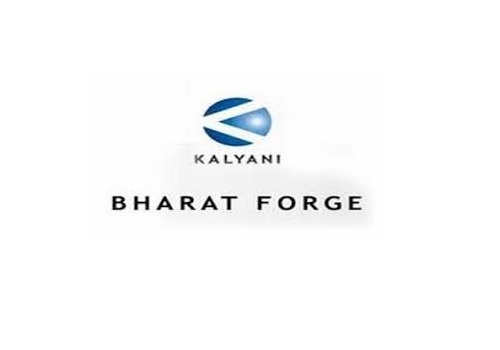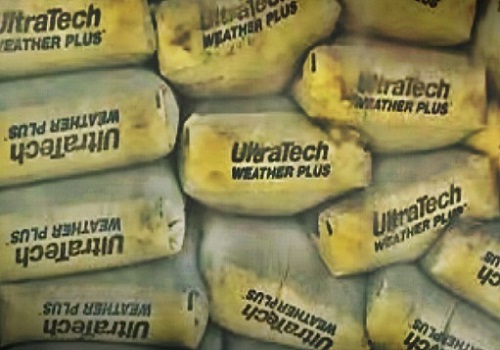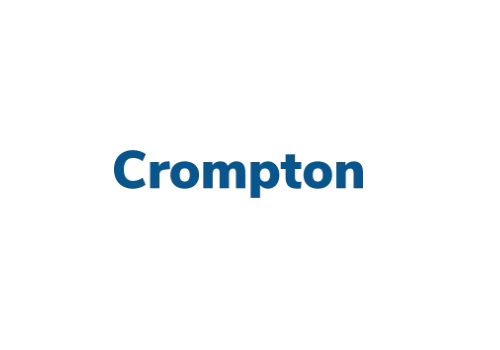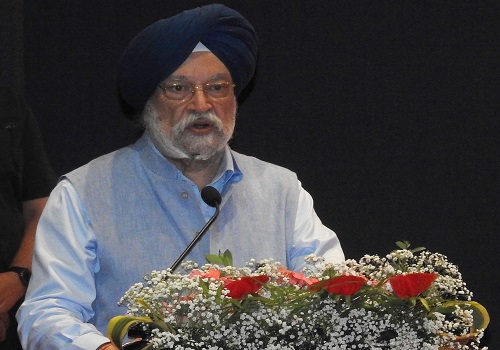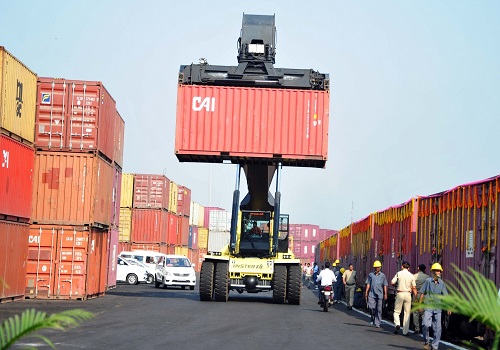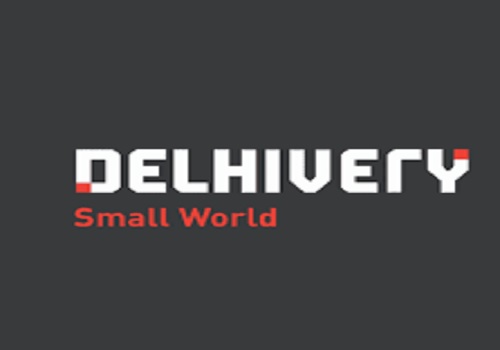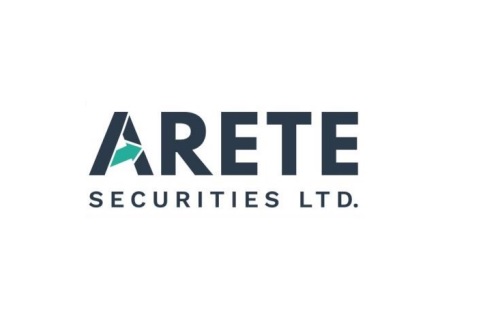Delhivery coming up with IPO to raise around Rs 5519 crore

Follow us Now on Telegram ! Get daily 10 - 12 important updates on Business, Finance and Investment. Join our Telegram Channel
Delhivery
-
Delhivery is coming out with a 100% book building; initial public offering (IPO) of 11,33,36,452 shares of Rs 1 each in a price band Rs 462-487 per equity share.
-
Not more than 75% of the issue will be allocated to Qualified Institutional Buyers (QIBs), including 5% to the mutual funds. Further, not less than 15% of the issue will be available for the non-institutional bidders and the remaining 10% for the retail investors.
-
The issue will open for subscription on May 11, 2022 and will close on May 13, 2022.
-
The shares will be listed on BSE as well as NSE.
-
The face value of the share is Rs 1 and is priced 462 times of its face value on the lower side and 487 times on the higher side.
-
Book running lead managers to the issue are Kotak Mahindra Capital Company, Morgan Stanley India Company, BofA Securities India and Citigroup Global Markets India.
-
Compliance Officer for the issue is Sunil Kumar Bansal.
Profile of the company
The company is the largest and fastest growing fully-integrated logistics player in India by revenue as of Fiscal 2021. It provides a full-range of logistics services, including express parcel and heavy goods delivery, parttruckload freight (PTL), truckload freight (TL), warehousing, supply chain solutions, cross border express and freight services and supply chain software, along with value added services, such as e-commerce return services, payment collection and processing, installation and assembly services and fraud detection.
The company provided supply chain solutions to a diverse base of 23,113 Active Customers (excluding those serviced by Spoton) such as e-commerce marketplaces, direct-to-consumer e-tailers and enterprises and SMEs across several verticals such as FMCG, consumer durables, consumer electronics, lifestyle, retail, automotive and manufacturing, for the nine months period ended December 31, 2021. This is achieved through high quality logistics infrastructure and network engineering, a vast network of domestic and global partners and significant investments in automation, all of which are orchestrated by the company’s self-developed logistics operating system that is guided in real-time by deep sources of proprietary network and environmental data. Together, these create powerful, intersecting flywheels that drive strong network synergies within and across its services and enhance its value proposition to customers.
The company has built a nation-wide network with presence in every state, servicing 17,488 PIN codes during the nine months period ended December 31, 2021, covering 90.61% of the 19,300 PIN codes in India as of December 31, 2021 (per India Post). Its network infrastructure includes 122 gateways, 21 automated sort centres, 93 fulfilment centers, 35 collection points, 31 returns processing centers, 244 service centres, 132 intermediate processing centers and 2,521 direct delivery centres as of December 31, 2021, including Spoton’s 40 gateways and 138 service centres.
Proceed is being used for:
-
Funding organic growth.
-
Funding inorganic growth through acquisition and strategic initiatives.
-
General corporate purposes.
Industry overview
The Indian logistics sector is one of the largest in the world and presents a large addressable opportunity, with a direct spend of $216 billion in Fiscal 2020. The sector is expected to grow to $365 billion by Fiscal 2026 at a CAGR of 9%, driven by: Strong underlying economic growth; Favorable regulatory environment in logistics, resulting in evolution of efficient supply chain formats; Improvement in India’s transportation infrastructure, especially highway connectivity; Growth of the domestic manufacturing sector, driven by favourable policy support and increased domestic and foreign investments; Rapid growth of the digital economy, which has led to creation of digital-native business models such as ecommerce, direct-to-consumer and social commerce; and Growth in offline commerce driven by increased offline consumption, industrial activity and cross border trade. The logistics market is primarily comprised of transportation and warehousing, of which transportation accounted for 70%, or $151 billion in Fiscal 2020.
Organized players accounted for only 3.5% of the logistics market (road transportation, warehousing & supplychain services only) in Fiscal 2020. Organized players are expected to grow at a CAGR of 35% between Fiscal 2020 and Fiscal 2026, taking their share to 12.5-15% by Fiscal 2026 of the logistics market (road transportation, warehousing & supply-chain services only). This shift is expected to be driven by the ability of organized players to offer integrated services, network and scale-driven efficiencies and larger investments in technology and engineering, resulting in higher share of wallet with customers.
Further, the Indian logistics industry is characterized by high indirect spends on account of high inventory carrying costs, pilferage, damage and wastage. Indirect spends were estimated at $174 billion in Fiscal 2020 and are expected to marginally decline to $166 billion by Fiscal 2026. This reduction will be led by organized players through superior logistics infrastructure that reduces pilferage and damages, efficient operations that reduce turnaround time and better utilize the logistics network capacity and through scale which drives consolidation and eliminates redundancies.
Pros and strengths
Rapid growth, extensive scale and improvement in unit economics: The company is the largest and fastest growing fully-integrated logistics services player in India by revenue as of Fiscal 2021, according to the RedSeer Report. Its revenue from contracts with customers has grown from Rs 16,538.97 million in Fiscal 2019 to Rs 36,465.27 million in Fiscal 2021, or a CAGR of 48.49%. Further its revenue from contracts with customers has improved from Rs 26,438.66 million for the nine months period ended December 31, 2020 to Rs 48,105.30 million for the nine months period ended December 31, 2021, or an increase of 81.95%. The company’s network structure, quality of engineering and technology and data intelligence capabilities have helped it to establish scale in all of its business lines and ensure synergies across them. This has driven higher network utilization, resulting in cost efficiencies, while maintaining service speed and reliability
Proprietary logistics operating system: The company’s team of 505 engineering, data sciences and product professionals (excluding Spoton), as of December 31, 2021, has built proprietary technology systems that enable it to offer integrated logistics services to a wide variety of customers. Its technology stack consists of more than 80 applications that encompass all supply chain processes including order management, warehouse management, transportation management, financial transactions such as billing and remittance, tracking and supply chain analytics, and that integrate with its customers’ systems.
Vast data intelligence capabilities: The company collects, store, process, structure and analyze vast quantities of transaction data such as location data, product information, shipper and consignee information, data from operational facilities, activities and devices, performance data for its field teams, data on traffic and weather from several internal and environmental sources. As it has expanded operations and business lines, it has grown access to new sources of data and, simultaneously, its ability to draw insights from these data. This is one of its most valuable assets.
Network design and engineering: The company’s network operates as a dense, dynamic mesh, making it efficient, fast and agile in responding to changes in volumes, shipment profiles and environmental conditions. The mesh structure allows it to reduce overall touch points in the journey of shipments through the network, reducing handling and improving precision, while also allowing it to utilize multiple feasible trans-shipment paths in periods of volatility.
Risks and concerns
Significant portion of business comes from large customers: A significant portion of the company’s business is attributable to certain large customers, with its top five customers contributing Rs 8,073.03 million, Rs 11,629.10 million, Rs 15,569.29 million, Rs 11,597.48 million and Rs 18,590.89 million to its revenue from contracts with customers for Fiscal 2019, Fiscal 2020 and Fiscal 2021 and the nine month periods ended December 31, 2020 and December 31, 2021, respectively, or 48.78%, 41.75%, 42.66%, 44.01% and 43.98% of its total revenue from contracts with customers for the same period, respectively. The company’s success depends on its ability to generate repeat customer use and increase the size of its business from its existing customers. Loss of a customer or termination of its contract by any significant customer may materially and adversely affect its revenues, cash flows and prospects. If its key customers require it to lower prices, its business could be materially and adversely affected.
Seasonality in business: The company experiences seasonality in its business, mainly reflecting the seasonality patterns associated with e-commerce, as well as holidays and festive periods in India. When e-commerce marketplaces hold special promotional campaigns, it typically observe peaks in shipment volume following these campaigns such that the third quarter of a fiscal year has historically been its largest quarter by volume in its express parcel business. The company’s consumer durable customers experience peaks in demand in the months preceding summer. Similarly, its PTL business experiences surges in volume towards the end of each quarter. Its financial condition, cash flows and results of operations for future periods may continue to fluctuate. As a result, its results of operations and the trading price of its Equity Shares may fluctuate from time to time due to seasonality.
Risks associated with shipments handled: The company handles a large volume of shipments through its network, and may face challenges with respect to the timely delivery, protection and inspection of these shipments. Shipments in its network may be delayed, stolen, lost or damaged, with fragile packages being particularly prone to damages, and it may face actual or alleged liability for such incidents. In addition, it may in the future fail to detect unsafe or prohibited or restricted items as it typically rely on customer declarations to determine the nature and value of shipments. Unsafe or illegal items processed and transported by it, such as flammables and explosives, toxic or corrosive items and radioactive materials, may damage other parcels in its network, injure their recipients, harm it to prevent illegal, prohibited or restricted items from entering its network may result in administrative or criminal penalties as well as civil liability for personal injury and property damage. Furthermore, any of the foregoing could result in litigation, a deterioration in customer satisfaction and insurance claims, and the repeated occurrence of any such events could cause it to lose customers.
Operates in highly fragmented industry: The company operates in a highly competitive industry. Many segments in which it operates have low barriers to entry, resulting in a highly fragmented market. Increased competition from unorganised third-party logistics or transport providers could force it to lower its prices, thereby reducing its profit margins or market share. It competes based on a number of factors, including the breadth of its services, network flexibility and stability, operational capabilities, infrastructure capacity, cost, pricing and service quality. If it cannot effectively control its costs and are required to increase its pricing in line with any cost increases, it could lose customers and its market share and revenue could decline. Its competitors may attempt to gain market share by lowering their rates, especially during economic slowdowns or in key regional markets. Such rate reductions may limit its ability to maintain or increase its rates and operating margins and impede its ability to grow its business.
Outlook
Delhivery provides a full range of logistics services, including delivery of express parcel and heavy goods, PTL freight, TL freight, warehousing, supply chain solutions, cross-border Express, freight services, and supply chain software. The company also offers value-added services such as e-commerce return services, payment collection and processing, installation & assembly services, and fraud detection. On the concern side, a significant portion of its business is attributable to certain large customers. Their future actions may have an adverse impact on its business. If it fails to expand the size of its business with its existing customers, its business, revenue, profitability and growth may be harmed.
The issue has been offered in a price band of Rs 462-487 per equity share. The aggregate size of the offer is Rs 5,236.14 crore to Rs 5,519.49 crore based on lower and upper price band respectively. Minimum application is to be made for 30 shares and in multiples thereon, thereafter. Meanwhile, the company’s revenue from contracts with customers increased by 31.14% to Rs 36,465.27 million in Fiscal 2021 from Rs 27,805.75 million in Fiscal 2020, primarily driven by an increase in revenue from services. Moreover, the company’s restated loss for the year increased to Rs 4,157.43 million in Fiscal 2021 from a net loss of Rs 2,689.26 million in Fiscal 2020.
Meanwhile, the company will continue to expand its operational capabilities and expand network infrastructure and capacity across business lines. It has commissioned mega-gateways that will go live in Tauru (Haryana), Bhiwandi (Maharashtra) and Bengaluru (Karnataka). The company expects to build new integrated facilities and mega-gateways in major cities, further expand capacity at existing automated sort centers, commission new sorters at strategic locations and invest in portable automation to enhance capacity at collection and return centers and intermediate processing centers. Moreover, the company will continue to expand wallet share with existing customers by designing customized and integrated supply chain solutions for their specific needs and industries and introducing practices from its experiences with other customers.
